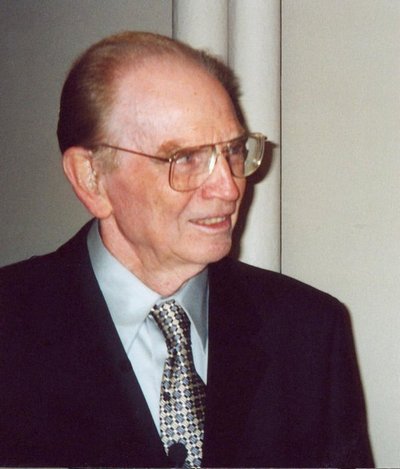March 16, 2005
UW alum first recipient of award for outstanding achievements in biomaterials
A University of Washington alumnus who invented more than 30 biomedical devices, including a shunt that made kidney dialysis practical, has been named the inaugural recipient of the Northwest Pioneers of Biomaterials and Medical Devices Award.
Wayne Quinton, a 1958 graduate of the UW’s Department of Mechanical Engineering, received the award during a recent conference at the university. Sponsored by the UW Engineered Biomaterials Research Center, the award is intended to honor those who have made significant contributions to the vigorously expanding field.
The honor is especially appropriate for Quinton, according to Yongmin Kim, chair of the UW Department of Bioengineering.
“Wayne was the first bioengineer, not just at the UW, but anywhere,” Kim said. “He is widely credited with coining the term ‘bioengineer.'”
Buddy Ratner, director of the sponsoring center, said that the award fills a need for greater recognition of those who have contributed to the rapid rise of bioengineering as a discipline.
“Our biomaterials group is one of the largest and best-known in the world,” he said. “We have a surprising number of people right here in the Pacific Northwest who have made substantial contributions to biomaterials and medical devices constructed of them. So it’s appropriate for us to launch this award.”
Quinton earned his bachelor’s in mechanical engineering while running the UW’s Medical Instrument Department. His engineering studies inspired discussions with physicians who were trying to solve vexing clinical problems. He applied engineering principles to the issues, collaborating with medical practitioners to create more than 30 innovative devices. It was those collaborations that led to the establishment of UW Bioengineering in 1967.
Ratner said that while Quinton’s contributions are impressive, both in terms of quantity and impact, one stands above the others.
“Into the late 1940s, kidney failure meant an agonizing death that lasted over about six weeks,” Ratner said. A Dutch doctor pioneered the use of dialysis to cleanse patients’ blood, but there were just a few sites where doctors could tap into a person’s bloodstream. When those sites became unusable because of surgical damage, the patient would sicken and die.
Working with Dr. Belding Scribner at the UW, Quinton designed and built a shunt that, when implanted in a patient, allowed repeated access to the bloodstream and made long-term dialysis therapy possible.
“Literally, millions of lives were saved by the Quinton/Scribner shunt,” Ratner said.
###
For more information, contact Ratner at (206) 685-1005 or ratner@uweb.engr.washington.edu.

